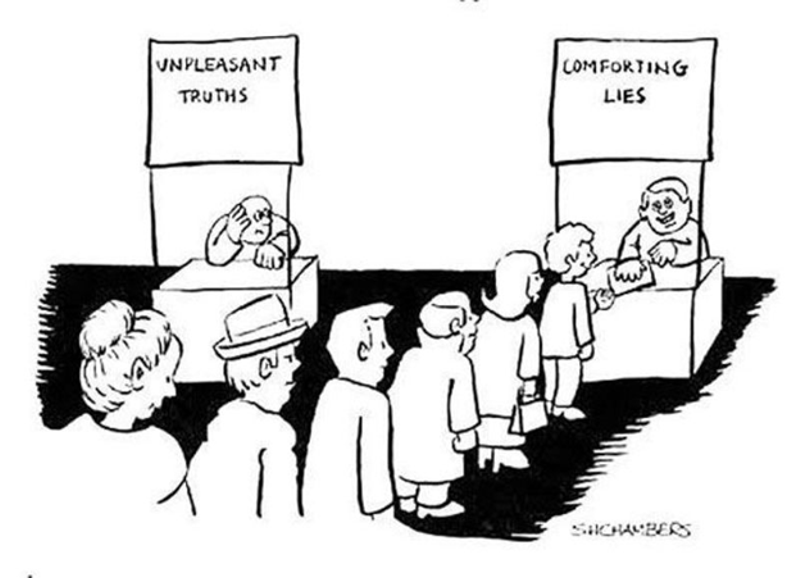Investors’ Behavioral Biases: Part VIII – Cognitive Dissonance
The recent US election has led to cognitive dissonance for many people, particularly Clinton supporters. Having Trump win after being certain that Clinton was a shoo-in led to conflicting emotions. To resolve this emotional conflict some developed ludicrous theories, such as vote rigging by the Russians, and that Clinton would have won had everything been fair.
 Courtesy Alen Malhasoglu
Courtesy Alen Malhasoglu
In the investment world, cognitive dissonance is a form of self-deception and comparable to confirmation bias. Imagine that after appropriate research you take a position in a stock. Then new, negative information becomes available that is contrary to your initial research conclusions. Thus, you now have two conflicting beliefs which will need resolution.
Selling the stock seems the logical conclusion, but the human brain often does not work logically, as shown in the cartoon above. More commonly, you could ignore, misrepresent or downplay the new information and thus resolve the conflict.
I will finish with an example. An ASX listed gold explorer had announced many good intersections and the price trebled over a six month period. Then they announced a maiden resource, along with metallurgical data, and the price fell by 50%. The reason was that gold recoveries were relatively poor which in turn put the project economics in doubt.
Although selling was heavy, many shareholders didn’t sell, on the basis that the metallurgical issues were solvable. The shares have subsequently fallen a further 30%. Those that didn’t sell suffered from cognitive dissonance and downplayed the new information to resolve the emotional conflict.
Cognitive dissonance is easy to recognize in hindsight, not so easy when you are in the thick of it.
Links to the first posts of the series
Investors’ Behavioral Biases: Part I – Recency Bias
Investors’ Behavioral Biases: Part II – Optimism Bias
Investors’ Behavioral Biases: Part III – Loss Aversion
Investors’ Behavioral Biases: Part IV – Confirmation Bias
Investors’ Behavioral Biases: Part V – Herding
Investors Behavioral Biases: Part VI – Self-Serving Bias
Investors’ Behavioral Biases: Part VII – Choice Paralysis
